Invented by Johan Lantto, Thomas Bouquin, Klaus Koefoed, Torben Gjetting, Vikram Kjoller BHATIA, Monika Gad, Gunther Roland GALLER, Camilla Frohlich, Laboratoires Servier SAS
The demand for Anti-PD-1 antibodies has been driven by the increasing incidence of cancer worldwide and the need for more effective and targeted treatment options. According to the World Health Organization (WHO), cancer is one of the leading causes of death globally, with approximately 10 million deaths in 2020 alone. This alarming statistic has prompted extensive research and development efforts to find novel therapies, leading to the emergence of Anti-PD-1 antibodies as a promising solution.
One of the key factors contributing to the market growth is the proven efficacy of Anti-PD-1 antibodies in treating various types of cancer. These antibodies have shown remarkable results in clinical trials, demonstrating improved overall survival rates and durable responses in patients with melanoma, lung cancer, bladder cancer, and many other malignancies. As a result, regulatory agencies around the world, such as the U.S. Food and Drug Administration (FDA) and the European Medicines Agency (EMA), have approved several Anti-PD-1 antibodies for the treatment of different cancer indications.
Another significant driver of the market is the increasing investment in research and development activities by pharmaceutical companies. Many companies are actively engaged in developing new Anti-PD-1 antibodies, compositions, and formulations to enhance their therapeutic potential and expand their applications. This competitive landscape has led to a surge in clinical trials and collaborations, fostering innovation and driving market growth.
Furthermore, the market for Anti-PD-1 antibodies is also benefiting from the rising adoption of personalized medicine approaches. With advancements in genomic profiling and biomarker identification, healthcare providers can now better identify patients who are most likely to respond to Anti-PD-1 antibody therapy. This targeted approach not only improves patient outcomes but also reduces healthcare costs by avoiding unnecessary treatments for non-responsive individuals.
In terms of compositions and formulations, researchers are continuously exploring novel delivery methods to optimize the efficacy and safety of Anti-PD-1 antibodies. For instance, combination therapies involving Anti-PD-1 antibodies and other immunotherapies, such as Anti-CTLA-4 antibodies or targeted therapies, are being investigated to enhance treatment responses. Additionally, efforts are being made to develop subcutaneous formulations of Anti-PD-1 antibodies, which would offer convenience and potentially reduce healthcare expenses associated with intravenous administration.
Despite the significant advancements and market growth, challenges remain in the Anti-PD-1 antibody market. High treatment costs, limited access to therapy in certain regions, and potential immune-related adverse events are some of the barriers that need to be addressed. However, ongoing research and collaborations between pharmaceutical companies, academic institutions, and regulatory bodies are expected to overcome these challenges and further propel the market forward.
In conclusion, the market for Anti-PD-1 antibodies, compositions, and formulations is witnessing remarkable growth due to the increasing prevalence of cancer and the need for more effective treatments. The proven efficacy of these antibodies, coupled with ongoing research and development efforts, personalized medicine approaches, and innovative compositions and formulations, are driving market expansion. As the understanding of cancer immunotherapy continues to evolve, Anti-PD-1 antibodies are expected to play a crucial role in improving patient outcomes and transforming the landscape of cancer treatment.
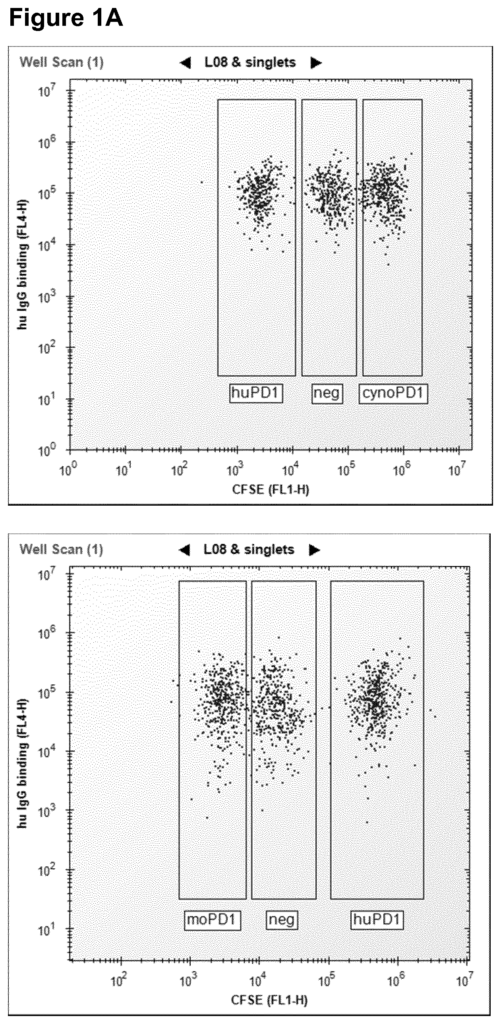
The Laboratoires Servier SAS invention works as follows
This invention relates anti-PD-1 antibody and methods for using them to treat diseases and conditions that are related to PD-lactivity. For example, cancer.
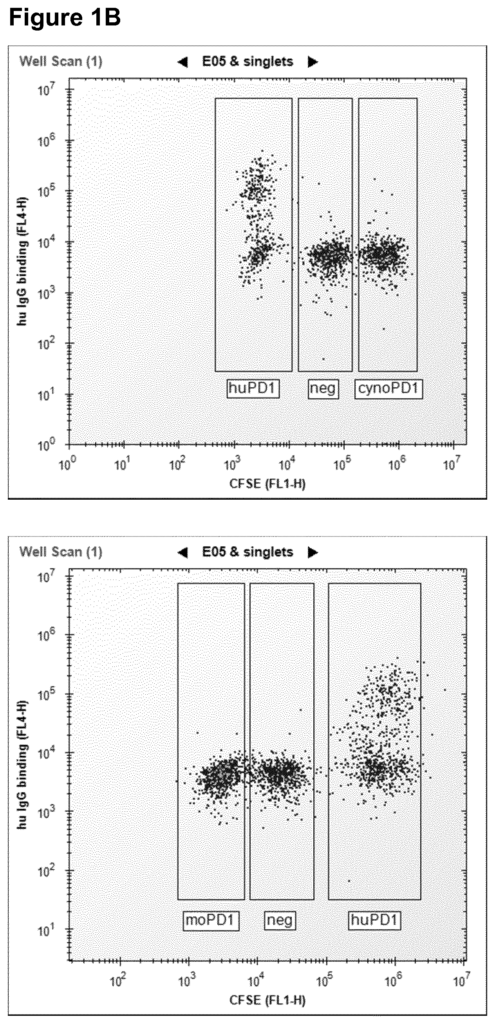
Background for Anti-PD-1 antibodies, compositions and formulations
PD-1 is also known as Programmed Cell Death Protein 1 or CD279 and is a cell surface receptor with 268 amino acids that belongs to superfamily of immunoglobulins. PD-1 belongs to the CD28 T-cell regulator family and is expressed by T cells, macrophages, and B cells. It binds ligands PDL1 (also called B7 homolog), and PDL2 (also called B7-DC).
PD-1 is a membrane type I protein whose structure contains an extracellular IgV region, a transmembrane area and an intracellular tail containing 2 phosphorylation site.” PD-1, also known as immune checkpoint, is an inducible immunomodulatory receptor that plays a key role in the negative regulation of T-cell responses to antigen.
PD-L1 has been identified as the dominant ligand of PD-1. Binding PD-L1 with PD-1 reduces T cell activation, cytokine release and T cell proliferation. Cancer cells that express PD-1 can use this mechanism to inhibit the anti-tumor effect of T cells by binding PD-1 to PD-1.
PD-1’s immune response-regulating properties have been investigated as a possible target for immunotherapy including the treatment of cancer and autoimmune disease.” In the United States of America and Europe, two anti-PD-1 antibody drugs, pembrolizumab nivolumab have been approved for certain cancers.
The PD-1 receptor is a critical immune modulator. Therefore, it is important to develop new and improved immunotherapies that target the PD-1 receptor in order to treat cancer and certain immune disorders.
The present invention is directed towards novel recombinant anti-PD-1 antibodies as well as pharmaceutical formulations comprising these antibodies. It also includes the use of the antibodies for enhancing immune response in a patient and for treating cancers originating from various tissues including skin, lung intestine colon brain prostate kidney soft tissues hematopoietic systems head and neck liver bladder breast stomach uterus pancreas. It is envisaged that the antibodies may be superior to other cancer treatments available today, such as antibody treatments. This could occur either in conjunction with another cancer therapy, such an antibody targeting another immuno checkpoint protein.
The present invention, in one embodiment, provides an antigen-binding antibody that competes with or binds the same epitope on human PD-1, as any of the following antibodies: 18040,18049, 18113,18201,18247,18325,18366,18400, 18413, and 18483.
In one embodiment, anti-PD-1 antibodies compete for binding with human PD-1 by using an antibody whose H-CDR1-3 (heavy chain) and L-CDR1-3 (light chain) are the same or derived from antibody 18040 18049 18098 18113 18201 18247 18250 18325 18366 18400, 18413 or 18483.
The anti-PD-1 antibodies bind to the same epitope as human PD-1 that is bound by an antibody whose H-CDR1-3 (heavy chain) and L-CDR1-3 (light chain) are the same or derived from antibody 18040 18049 18098 18113 18201 18247 18250 18325 18366 18400, 18413 or 18483.
The anti-PD-1 antibodies can be made up of H-CDR1-3, which is the H-CDR1-3 sequences from antibody 18040 or 18049.
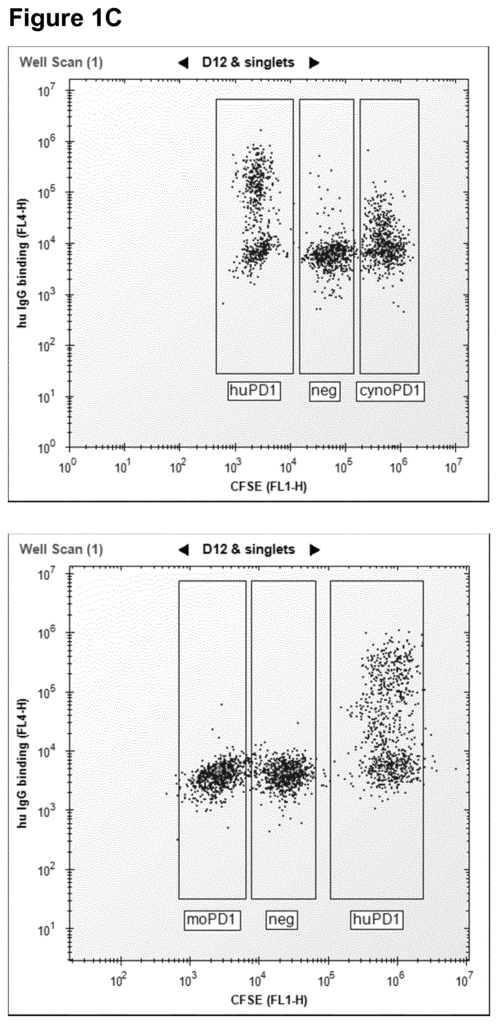
The anti-PD-1 antibodies have a heavy chain variable (VH) domain that is at 90% (e.g., at 92%, 95%, 98% or 99%) identical to the VH of the antibody 18040. 18049. 18113. 18201. 18247. 18250. 18325. 18366. 18400. 18413. or 18483.
In one embodiment the anti-PD-1 antibodies has a VH which comprises the VH sequence amino acids of antibody 18040 18049 18098 18113 18201 18247 18250 18325 18366 18400 18413 or 18483.
In one embodiment, anti-PD-1 antibodies have a heavy chains (HC) which consists of the VH amino acids sequences of antibodies 18040,18049,18113,18201,18247,18250, 18325, 18366,18400, 18413 or 18483 and the heavy chains constant region amino acids sequence of SEQID NO: 26.
The anti-PD-1 antibodies can be made up of L-CDR1-3, which is the L-CDR1-3 sequences from antibody 18040 or 18049.
The anti-PD-1 antibodies have a light chain VL that is at 90% (e.g. at least 92% or 95% or 98% or 99%) identical to the amino acid sequence of the VL domains of antibody 18040 or 18049 or 18113 or 18247 or 18325 or 18366 or 18400 or 18413 or 18483.
In one embodiment the anti-PD-1 antibodies has a VL which comprises the VL sequence amino acids of antibody 18040 18049 18098 18113 18201 18247 18250 18325 18366 18400 18413 or 18483.
In one embodiment, anti-PD-1 antibodies have a lightchain (LC) which contains the VL amino acids sequences of antibodies 18040,18049,18098,18113,18201,18247,18250, 18325, 18366,18400, 18413 or 18483 and the lightchain constant region amino acids sequence of SEQID NO: 28.
The anti-PD-1 antibodies can be made from the H-CDR3 or L-CDR3 sequences found in antibody 18040,18049,18098,18113,18201,18247,18325,18366,18400,18413,or18483.
The anti-PD-1 antibodies can be made from the H-CDR1-3 or L-CDR1-3 amino acids of the following antibodies: 18040,18049,18098,18113,18201,18247,18250, 18325,18366,18400, 18413 or 18483.
In one embodiment, anti-PD-1 antibodies have a VH (or VL) that is at least 90% identical in amino acids sequence to antibody 18040 or 18049 or 18113 or 18247 or 18325 or 18366 or 18400 or 18413 or 18483.
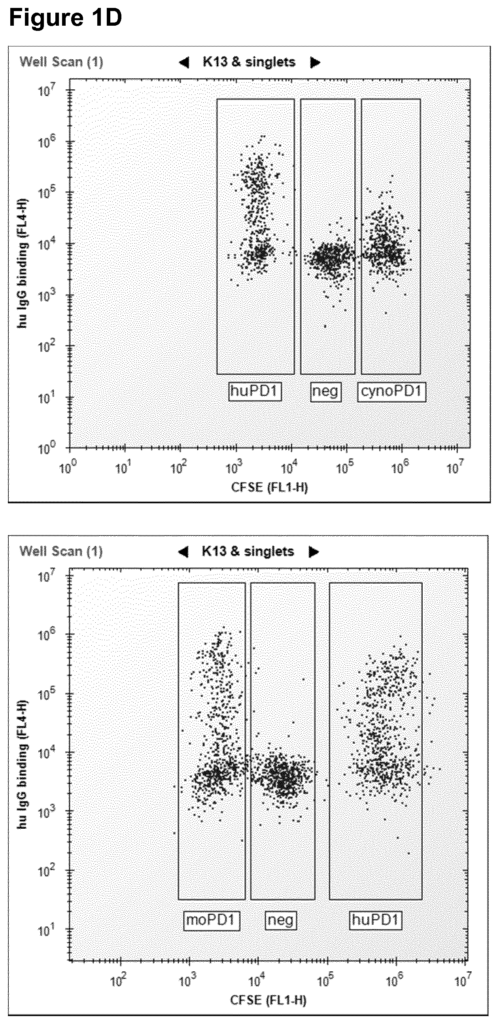
In one embodiment the anti-PD-1 antibodies has a VH that comprises or consists of the amino acid sequences of antibody 18040 or 18049 or 18113 or 18247 or 18325 or 18366 or 18400 or 18413 or 18483.
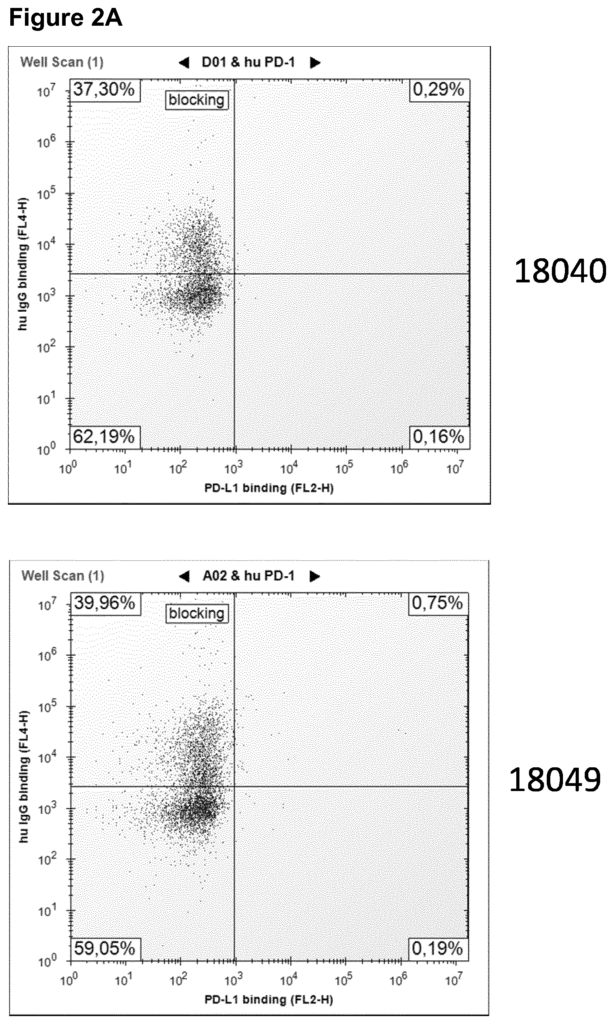
Click here to view the patent on Google Patents.
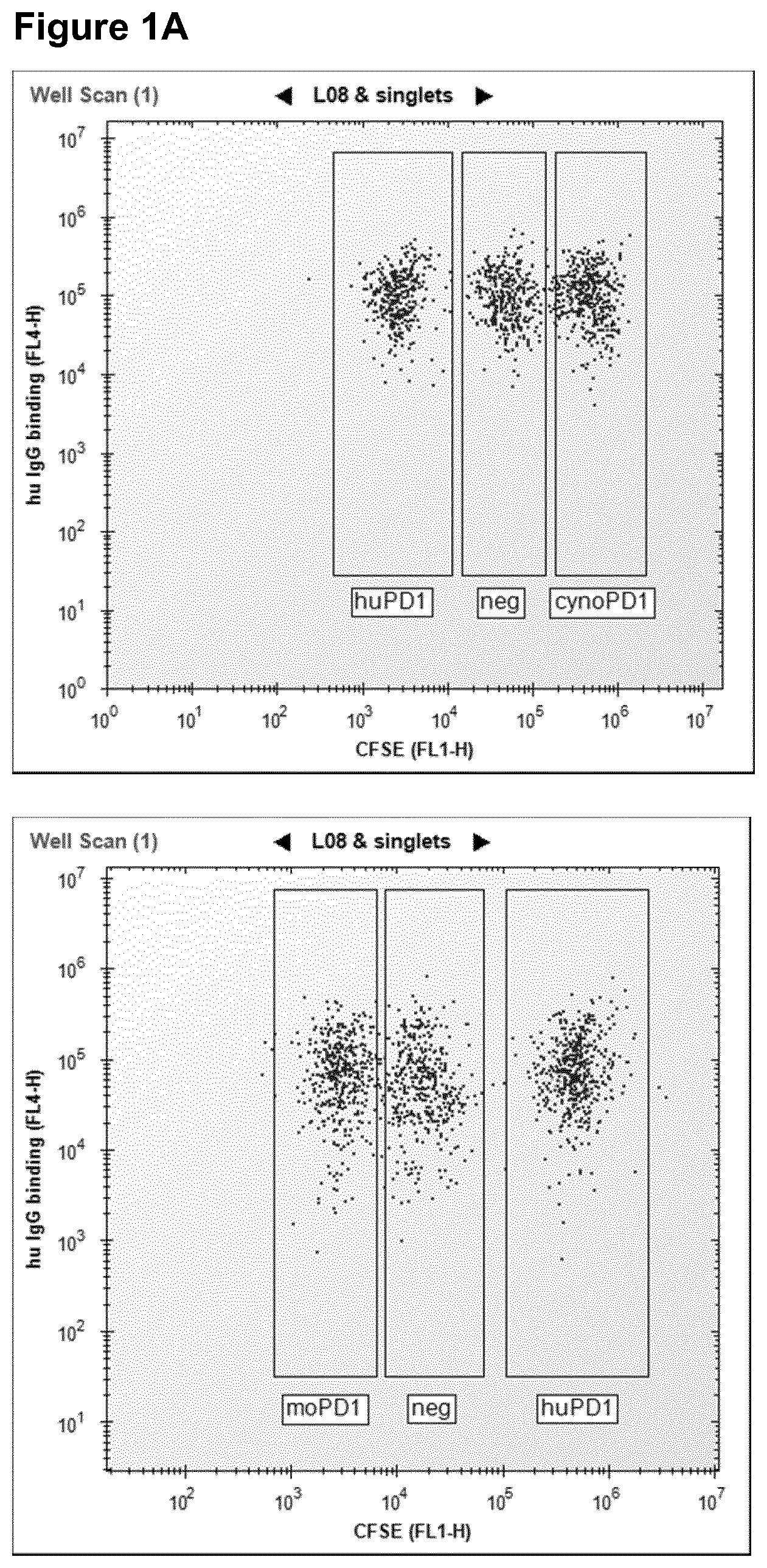
Leave a Reply